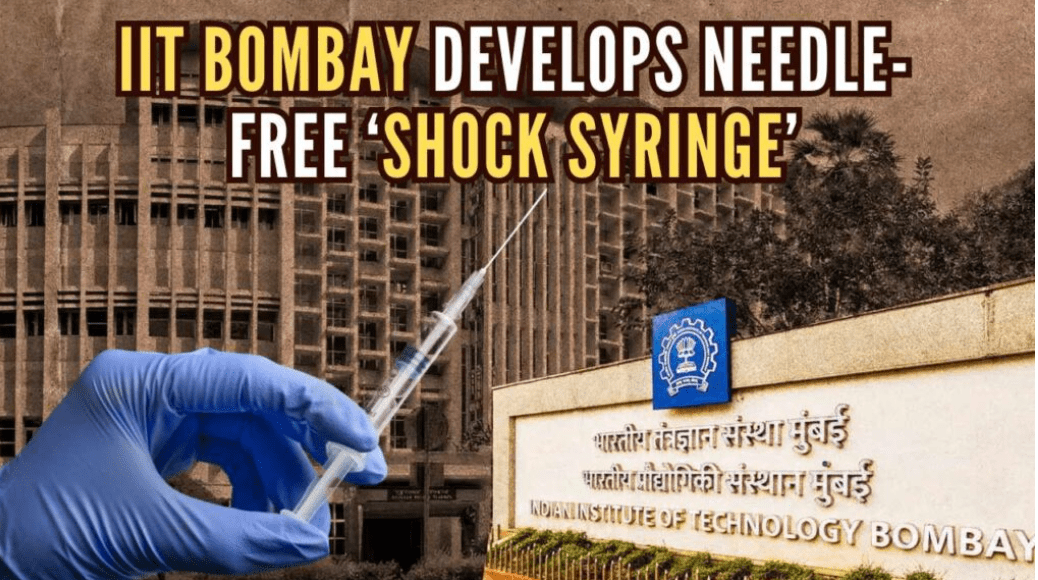Needles have long been a necessary, yet often dreaded, tool in medical care. But thanks to the innovative minds at the Indian Institute of Technology (IIT) Bombay, needle-free injections might soon be a reality. A team led by Professor Viren Menezes from the Department of Aerospace Engineering has developed the shock syringe, a painless and efficient alternative to traditional needles, inspired by aerospace engineering.
The Technology Behind the Shock Syringe
Unlike conventional syringes, which rely on needles to penetrate the skin, the shock syringe utilizes high-energy shock waves traveling faster than the speed of sound. These waves create a microjet of liquid medication that penetrates the skin with minimal discomfort. Think of it as a medical application of a sonic boom—innovative, quick, and painless.
The shock syringe, about the size of a ballpoint pen, is built with a micro-shock tube comprising three main parts:
- Driver section
- Driven section
- Drug holder
By releasing pressurized nitrogen gas, the device generates a microjet that travels at speeds twice that of a commercial airplane during takeoff.
Research and Results
A research paper published in September 2024 in the Journal of Biomedical Materials & Devices confirmed the efficacy of the shock syringe. Laboratory tests on rats demonstrated its ability to deliver three drugs:
- Anesthetic (Ketamine-Xylazine): Comparable anesthetic effects to traditional needles.
- Antifungal (Terbinafine): Effective in delivering viscous formulations deeper into the skin.
- Insulin: Maintained lower blood sugar levels for longer durations compared to traditional injections.
Importantly, the shock syringe caused less skin trauma and inflammation, leading to faster healing than conventional needles.
A Game-Changer for Needle Phobia and Healthcare
Needle phobia often prevents patients, especially children, from receiving vaccinations or necessary treatments. The shock syringe offers a painless solution, making it a potential breakthrough for immunization drives and routine medical care.
The device also addresses key safety concerns:
- Reduces the risk of needle-stick injuries, which can spread blood-borne diseases.
- Offers a cost-effective solution with over 1,000 uses per nozzle replacement.
From Aerospace to Healthcare
Research scholar Priyanka Hankare, the study’s lead author, shared how the project began in 2021 and took over two years to develop. As an aerospace engineer, she reimagined shock waves, traditionally seen as destructive forces, to create something constructive and beneficial for healthcare.
“This device has the potential to transform how we approach drug delivery, especially for those who fear needles,” she said.
What’s Next?
The IIT Bombay team is filing for a patent and preparing to seek regulatory approval. With further development and testing, this revolutionary technology could soon become a staple in hospitals and clinics worldwide.
The Future of Pain-Free Healthcare
The shock syringe is more than an engineering marvel; it’s a symbol of how interdisciplinary innovation can solve real-world problems. By addressing needle phobia, reducing healthcare risks, and improving drug delivery efficiency, it promises to make medical care more accessible, safer, and patient-friendly.
To register for our next masterclass please click here https://linktr.ee/docpreneur




